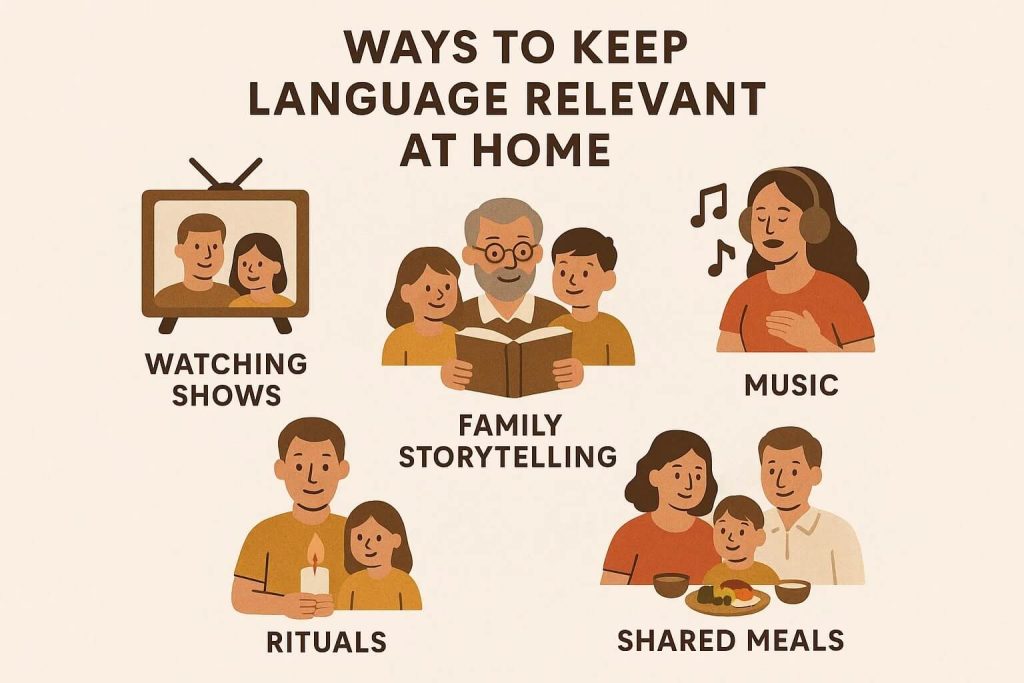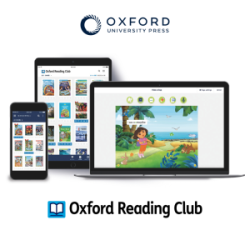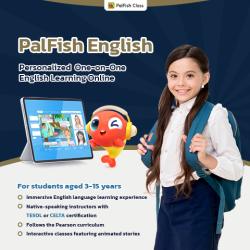You might notice it in small moments, such as your child answering in English when you speak your native language, avoiding speaking it altogether around their friends, or showing hesitation when visiting relatives back home. For internationally mobile families, this can be both confusing and disheartening. After years of building a strong foundation in your home language, it may feel like your child is gradually letting go of an important part of their identity.
But this behaviour is not unusual. Many children resist using their native language abroad not because they’re rejecting it, but because they’re navigating a social environment where speaking differently can feel risky. From a desire to fit in at school to subtle fears of sounding “wrong,” this resistance is often a response to external pressures. In this article, we’ll unpack what’s really going on and offer practical, empathetic strategies to help you support your child’s multilingual development, without turning language into a battleground.
Understanding the Emotional Landscape
Language is deeply tied to identity, and for students growing up abroad, that identity is constantly evolving. Speaking a language that’s different from their peers can heighten feelings of self-consciousness, especially in environments where social acceptance hinges on similarity. For some children, their native language becomes associated with “difference,” and that difference can feel isolating.
In many cases, resistance stems from a simple yet powerful emotional response: embarrassment. A child who speaks fluently at home might suddenly fall silent at school or in public, not because they lack confidence in the language itself, but because they’re anxious about how it will be received. Will others understand? Will they sound strange? Will someone make fun of their accent? These internal questions shape behaviour more than ability alone.
Understanding this emotional layer helps parents reframe the issue. Instead of seeing language resistance as defiance or laziness, it becomes clear that it’s often a form of social self-protection. By acknowledging those feelings, and gently validating them, you can begin to bridge the gap with empathy rather than pressure.
Why It’s Not About Fluency
Many parents assume that if their child is fluent in their native language at home, they’ll naturally use it in other contexts. But language use is heavily influenced by context, peer dynamics, and a sense of belonging. Fluency does not always equal confidence.
Consider a bilingual student who speaks Mandarin at home but attends an international school where English dominates. Although they can hold a conversation fluently with family, they may hesitate to speak Mandarin in front of classmates. This relates to social cues and the desire to fit in.

What’s more, even students with high proficiency may feel a disconnect between the language and their environment. If they rarely hear others speaking their native tongue outside the home, it may start to feel irrelevant or awkward. This perception can create a subtle shift where the native language becomes “private” and the school language becomes “public.”
Parents can support students by recognising that these hesitations are rooted in social context, not academic weakness. Open conversations about when, where, and why their child feels reluctant can uncover deeper emotional layers, and reveal that what seems like resistance is often just a response to their surroundings.
Cultural Identity and Belonging
For many students growing up in multilingual homes, language becomes a symbol of who they are. Yet in international or host-country settings, that identity can feel fragmented. The desire to blend in often competes with a need to hold on to heritage. When a student chooses not to speak their native language in public, it’s often a quiet negotiation between two cultural worlds.
Language carries powerful emotional weight. For some students, using their native language might feel like stepping outside the group. They might worry about being misunderstood, laughed at, or seen as “different.” In peer-heavy environments, particularly in early adolescence, this fear can be enough to silence even the most fluent speakers.

One way parents can help is by reinforcing that speaking their native language is a strength, not a barrier. This could be as simple as sharing stories about how bilingualism is valued in the real world, such as in university admissions or future careers. But equally important is creating spaces where both languages feel equally valued. This might mean celebrating family traditions at school, listening to music in both languages at home, or maintaining strong connections with relatives abroad.
Encouraging students to see their native language as part of a larger cultural narrative helps shift the focus from fear to pride. When language is framed as something that connects rather than separates, students are more likely to use it with confidence, even beyond the home.
What Parents Can Do in Terms of Practical Strategies
Supporting your child’s relationship with their native language while living abroad requires subtle encouragement and a long-term view. Instead of making language use a battleground, the goal is to create consistent, positive opportunities for meaningful use.
Rethink the Home Language Environment
If your child resists speaking your home language, try increasing its relevance rather than its enforcement. For example:
- Share films, books, or podcasts in your native language that match their interests.
- Invite conversations that connect language with lived experiences, discuss family memories, travel stories, or cultural traditions in your home language.
- Use the language for specific purposes, such as storytelling, humour, or family rituals, so it becomes associated with connection rather than correction.

Promote Authentic Motivation
Instead of telling your child they “must” speak a certain way, show them why it matters:
- Point out real-world examples of bilingual adults they admire, such as musicians, athletes, scientists, or entrepreneurs.
Emphasise the social and emotional rewards: being able to speak with grandparents, read cultural literature in the original, or retain their cultural roots when they visit home.

Finding a Path That Works for Your Family
Language learning in a multicultural setting is rarely linear. If your child resists speaking their native language, it is often a reflection of their context, emotions, or stage of development. By tuning in with empathy, creating authentic opportunities to reconnect with the language, and adjusting expectations over time, parents can build a supportive bridge between identity and communication.
For more insights on raising globally minded, multilingual learners, visit AISL Mall.
Language Learning that may be of interest:
Get a special discount by quoting code AISLMALL during CHECKOUT.
Duolingo: Language Learning

Master new languages with the world’s most popular and effective language learning app. Duolingo’s fun, gamified lessons and adaptive algorithms make language practice engaging and personalized for each user. From Spanish and French to Klingon and High Valyrian, choose from over 30 languages to unlock new opportunities. With bite-sized daily lessons, points, levels, and leaderboards, Duolingo keeps you motivated to build valuable language skills. Whether you’re a beginner or advanced learner, Duolingo provides a free, accessible path to fluency.
EAL Inclusive: Live English Accelerator Classes for Students

EAL Inclusive online English lessons, led by qualified teachers, help children improve proficiency for success in international schools. Personalized lessons focus on reading, writing, speaking, and listening skills, tailored to each student’s level, goals, and interests through engaging activities. Our student-centred online English lessons empower every child to improve their English proficiency and build the confidence needed to excel in an international school environment.
LingQ: Language Explorer Pass

LingQ is a fun, simple way to learn languages from authentic, interesting content. Learning the language from the language itself, just as most children learn their own language. With LingQ Premium enjoy unlimited learning of over 40+ different languages from 1000’s of hours of authentic content. The LingQ Language Explorer Pass gives unlimited access to 20 languages, offering audio transcripts, vocabulary tools, and progress tracking.
Novakid: Online English Classes For Kids

Novakid is Europe’s #1 online English school for kids aged 4-12, trusted by families worldwide. With certified native-speaking teachers, it offers interactive lessons that make learning fun and effective. Using games, activities, and full-language immersion, Novakid helps kids build confidence and English fluency. Join us in shaping your child’s future with a free trial lesson and a curriculum designed for success.
Oxford University Press: Reading Club (Over 1000 ebooks with audio)

Oxford University Press is a department of the University of Oxford. It furthers the University’s objective of excellence in research, scholarship, and education by publishing worldwide. In fulfilling its objective of the furtherance of learning and culture, OUP is committed to continuous development of its scholarly and educational publishing, responding to the growing need for school, college, and academic books and information via diverse media, and extending and strengthening its international activities.
PalFish: Live English Class 1 on 1

PalFish is an education technology company founded in Beijing, headquartered in Singapore and with regional offices around the globe. PalFish Class offers personalized online English lessons for kids, featuring Pearson-accredited content and tailored to global standards like CCSS and CEFR. With 50,000+ certified native-speaking teachers and AI-driven tools, the platform ensures engaging lessons, after-school support, and quality education.
TutorABC: English and Chinese Learning

Speechsquare: Language Learning

Speechsquare is an AI Speech Analytics company. We optimize the tutoring and the assessment of oral skills. Our proprietary AI allows granular analysis of speech up to the phoneme, enabling instant visual and audio feedback for the learner and powerful analysis tools for language specialists. Speechsquare is available in 7 languages: English, Chinese, Korean, Japanese, Spanish, French, and German.
uTalk: Language Learning

uTalk is a British language company based in London UK. Established over 30 years ago. uTalk is a language-learning app offering microlessons, games, and quizzes in over 150 languages. It helps build essential listening and speaking skills for everyday communication, available on mobile and computer. It’s used by schools globally as a reinforcement tool in language programs. We have built up the knowledge and expertise of what it takes to learn languages.









